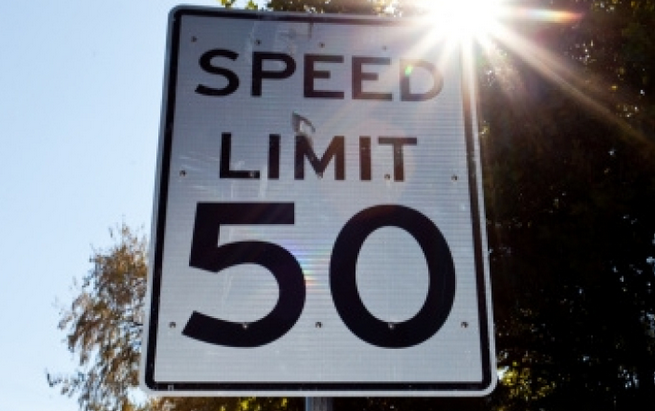EDMONTON – Ideas including upping enforcement and installing point-to-point speed cameras were discussed during Edmonton’s sixth annual International Conference on Urban Traffic Safety.

“I know one of the issues here is about the tolerance. Everyone goes sort of ten kilometres over the speed limit and thinks that’s perfectly safe,” said Ian Johnston, a traffic safety expert who has worked extensively in Victoria, Australia.
“In an urban area, that difference of 10 km/h makes a huge impact.”
“If your limit is 50 and people do 60, then the pedestrian is in real trouble.”
He explained that, in the past, speedometers only had to measure plus or minus 10 kilometres and automated enforcement – like radar guns – had to measure plus or minus three kilometers.
“Enforcement tolerance isn’t because we think it’s safe,” Johnston added, “it’s because it avoids legal challenge.”
Now, though, he says speed equipment is much more accurate.
Another way Australia reduced speeding was using point-to-point speed cameras on major highways.
“Everyone’s photographed at one intersection then at another major one,” he explained. “If you’ve been doing in excess of the speed limit for a length of time then you can’t say ‘I only did it to pass a truck.’”
The techniques in Victoria were used in conjunction with an educational component.
- Gas station clerk stabbed several times during violent attack at Ultramar in Montreal
- Canada’s most wanted list: Toronto suspect in fatal shooting at No. 1
- Man acquitted in Tina Fontaine murder found dead, says her aunt
- Canadians should expect politicians to support right to bail, Virani’s office says
“We do a very intense enforcement,” said Johnston. “And since we did that with a lot of public education backing up the enforcement, that has made a huge difference.”
“The speed limit came down, penalties doubled, speed cameras went up, the amount of enforcement probably tripled.”
The programs were implemented by 2002.
Johnston says the number of traffic-related causalities in Victoria dropped from 400 a year to just over 300 – that’s 25 per cent in one year. Currently, there are a little more than 200 traffic fatalities per year in Victoria.
He adds that the numbers speak for themselves, and that it’s up to communities to push legislators into action.
“We know what to do – the science tells us that – we can’t get it done. We can’t get it done because the community’s not yelling at the politicians.”
Edmonton’s Office of Traffic Safety is interested in some of the techniques used in Victoria.
“His research in particular starts to show really the impact of people being struck by vehicles at various speeds,” said Executive Director Gerry Shimko.
In terms of the mentality towards speeding here in Edmonton, he says, “Obviously there’s more work that needs to be done.”
Currently, Edmonton has 4.9 traffic injuries per 1,000 population.
To learn more about Edmonton’s traffic injury rate, click here.
There are already three local communities that have a 40 km/h residential speed limit, but Shimko says – for now – the focus in Edmonton will remain on improving education.
Still, heightening enforcement or lowering speed limits here remains an option.
“It’s certainly part of the discussion.”
Shimko agrees it’s hard to argue with Victoria’s numbers.
“You’ve gone from a state that has five million people – at one time, they had more than 1,000 fatalities annually – and the last time I was there a year or two ago, they were talking targets of 237 fatalities for a state of five million people.”
“Alberta, I think we’re over 330, and certainly we don’t have five million people.”
However, when it comes to adopting something like point-to-point speed cameras, Shimko says the current provincial legislation wouldn’t allow it.
“The legislation isn’t here, but it’s certainly something that could be considered for certain stretches of road in the long-term.”
However, he says Edmonton’s mayor is very supportive of traffic safety initiatives.
“He’s really looking and advocating for using funds from automated enforcement to support traffic safety,” Shimko explained.
“So I think that will be a big start to help us reach some of the things we have to do.”



Comments